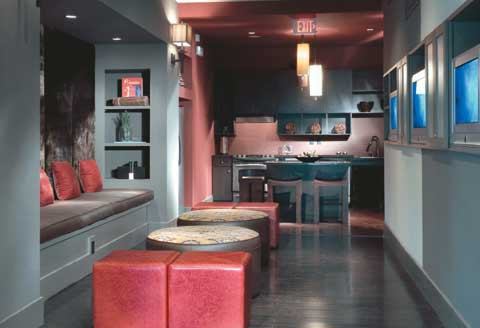Options and Decisions
Community centers demand different programs and amenities, depending on the property and its residents.
In affordable housing projects, community centers are primarily functional places, offering services that aid residents in their daily lives and long-term life skills. At SoCal properties, the emphasis is on education, so the nonprofit always offers amenities that promote its mission, such as parenting classes and computer training. Like many others, the nonprofit includes offices for social service organizations as well as counseling, career resources, and outdoor and specialty areas.
At Amcal Multi-Housing, affordable communities offer center amenities such as computer training for children and adults as well as after-school care. But more of the company’s centers now offer specialized amenities that depend on the area’s population. For largely immigrant areas, centers include English language classes, access to local medical offices, and seminars on how to access government services.
Those amenities change in affordable housing for seniors, who are interested in retirement specialists instead of job training and seek out health experts instead of parenting classes. “They aren’t interested in amenities like family development programs,” Vaz says. “Most of our seniors are interested in the social component and want a social director to organize games, dances, and activities.”
When it comes to market-rate and high-end condominiums, the community centers shed the functionality. Instead, they offer luxury, from pristine, resort-style pools to high-tech cafes and great rooms for entertaining. “We don’t offer services in market-rate condos,” Vaz says. “The centers all have places where people can work or congregate and use for entertainment. They want outside barbecue areas and tot lots for the kids.”
Richard Giannotti, executive vice president of asset quality at United Dominion Realty Trust, calls it “standard practice” to update old community centers at market-rate properties with one dominant feature that attracts the attention of prospects and residents alike. “You have to have a central feature, whether it’s a fireplace, billiards table, or big TV,” he says. The key is to make the space warm and inviting to residents.
Often, it’s the finishing touches that can make or break a community center. Companies across the board use rich paint colors, fancy window treatments, and artwork and knickknacks to really bring a clubhouse to life. “The way you accessorize a community center can really make a world of difference,” says Keith Knight, vice president of capital improvements for Rochester, N.Y-based Home Properties. “It’s really about getting that final layer [of decoration]–how you position things on tables, where you put a plant.”
Such attention to detail extends to fitness centers, where many property owners are adding cardio equipment with built-in LDC TVs. “(It’s) higher-priced for equipment, but when you spread it over the cost of the community, it’s not that expensive if you look at it on a per-unit basis,” says Knight.
